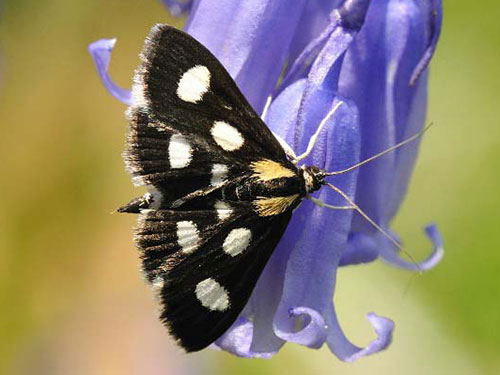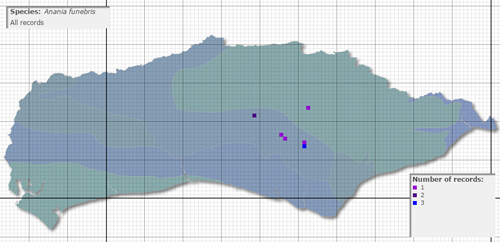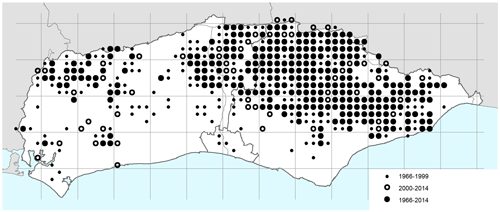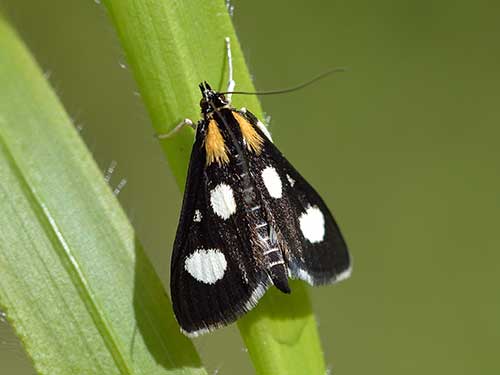


White-spotted Sable Anania funebris
Woodland near Ringmer, 2014
Photo:Bob Eade

Map showing distribution of records for Anania funebris
Source: Sussex Moth Group/SxBRC

Distribution map for Solidago virgaurea
Generated from SBRS data by SxBRC

White-spotted Sable Anania funebris
Denge Wood, Kent
Photo: Bob Eade
A member of the family Crambidae, the White-spotted Sable Anania funebris is an extremely distinctive and attractive day-flying micro moth that can be found, usually in woodland rides and glades, during the latter half of May and most of June, it is single brooded. Extremely local and favouring limestone areas, its distribution in the British Isles includes Sussex and Kent but it appears to be more frequently recorded in parts of west Wales, western England, Scotland and Ireland.
The adult moth has a wingspan of approximately 20mm and it flies, in sunshine, with a fast, spinning motion making it very difficult to follow, only being straightforward to identify when it has settled. In flight it could possibly be mistaken for a Grizzled Skipper Pyrgus malvae which, although it doesn’t ‘spin’ in flight is similarly difficult to see. Another possible confusion species is the closely related Spotted Magpie (or Elder Pearl) Anania coronata, also dark with white blotches on the wings these are less clearly defined, the latter species also lacks the distinctive yellow flanks on the thorax of A. funebris, A. coronata is also much less likely to be encountered during the daytime.
The larvae of Anania funebris feed exclusively on Goldenrod Solidago virgaurea (although some sources suggest that Dyer’s Greenweed Genista tinctoria is also used) which, as can be seen from the distribution map above is not uncommon and is widely distributed. However, the moth itself is very scarce in Sussex and we have very few records in the database from either of the two Vice Counties. The only records we have from the 20th Century are from woodlands to the northeast of Lewes, the most recent being from 2014. In the 1990s it was recorded at Chailey Common on a few occasions but not since. Sadly, it is possible that the moth is extinct in Sussex but it would be very good news if it were proved otherwise.
Please keep an eye out when you’re walking in the woods in May or June (especially if Goldenrod is present) and report any sightings, with photos to iRecord.
Every month it is our aim to highlight a species that is “in-season” and, although not necessarily rare or difficult to identify, has been highlighted by our local recording groups as being somewhat under-recorded and for which new records would therefore be welcomed.
If you or your recording group are aware of species such as this then please contact Bob Foreman.